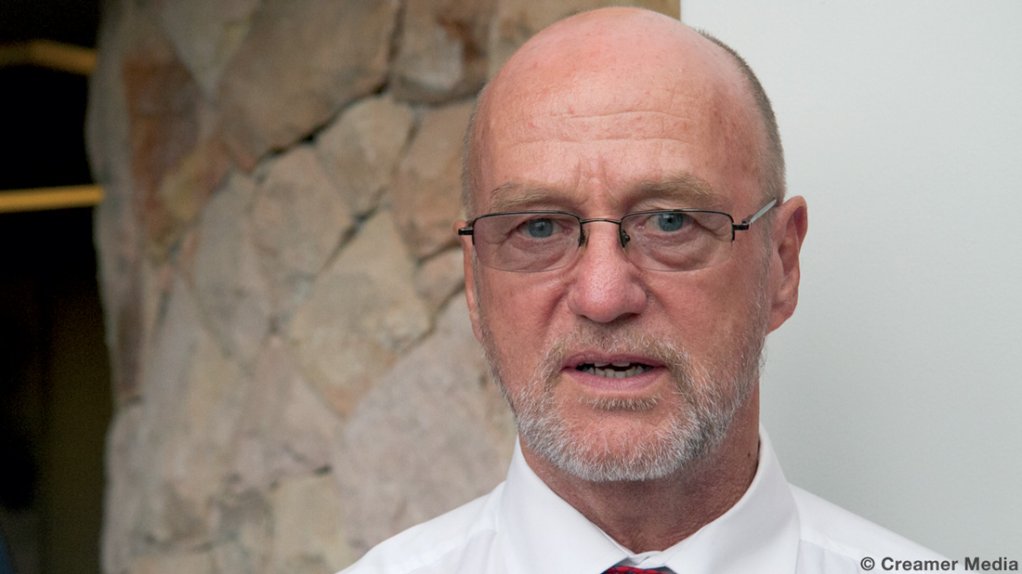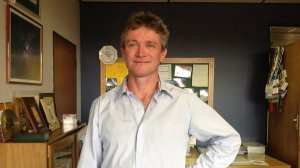The Council for Scientific and Industrial Research (CSIR) announced in Pretoria on Tuesday that it had developed the world's first digital laser. "I am always very cautious about using the term 'breakthrough'," noted Science and Technology Minister Derek Hanekom. "We scrutinized this very carefully before we said that this is really new! South African scientists are once again making noteworthy contributions to the world."
The digital laser has been developed by the Mathematical Optics Research Group of the CSIR's National Laser Centre. The head of this group is Professor Andrew Forbes. "We have four main focus areas -- structured light, quantum entanglements, bio optics and novel laser systems," he reported. The digital laser is a product of the novel laser systems focus area.
The digital laser allows the production of a wide variety of light patterns, by means of holograms, in a much simpler and easier way than hitherto. This has huge potential benefits for a wide range of disciplines, including manufacturing, medicine and especially photonics-based communications. Yet is does so by making use of well-established technologies.
A normal laser contains two mirrors, opposed to each other and at opposite ends of the instrument. One is highly reflective and the other is a curved, partially reflective mirror. In the digital laser, the curved mirror is replaced by a liquid crystal display (LCD) system. The LCD is connected to a computer and monitor.
The system uses holograms, which are composed of many shades of grey, and the LCD is calibrated for these. Different shades of grey cause the LCD to change the orientation of its liquid crystals. The beam generated within the laser hits the LCD, and is simultaneously reflected and changed in shape by the differently orientated liquid crystals. Researchers use the computer to specify the laser beam shape they require and to programme it into the LCD. By this means, one laser can swiftly produce many different beam shapes. Previously, changing the shape of a laser beam required physically replacing the curved mirror in the laser. As the mirror has to be carefully aligned, this is a time consuming process.
"The dynamic control of laser modes could open up many future applications, from communications to medicine," affirmed Forbes. "Our device represents a new way of thinking about laser technology and we see it as a new platform on which future technologies may be built." The intellectual property belongs to the CSIR and is protected.
Meanwhile, although the CSIR unveiled the digital laser on Tuesday, the development of the system is by no means finished. Work is continuing in expanding the light and power envelopes of the system.
"At the moment, the device works in the infrared (IR); the light produced by the laser is IR," explained Forbes. "We can change the wavelength of the light using standard tools, and we want to make other wavelengths work in the digital laser."
The next objective is to use visible wavelength light in the laser, specifically green. "The next target after that is ultraviolet (UV) -- you have to go through green first, to get to UV."
Currently, the digital laser is a low-power device, and the research team wants to make it work at higher power levels. They also want to make it work faster, even though it already works much faster than its conventional counterparts can.
The mathematic optics group was able to make this breakthrough – creating the digital laser – because, unusually, it combines theory with practice in one small team. "All of our work involves controlling light, structuring light, which involves a lot of maths," explained Forbes. "We usually develop the maths first and then do experiments in the laboratory. What makes us unique is that we do both -- maths and experiments."
The experiments for the digital laser have been run by PhD candidate Sandile Ngcobo. Currently, he and Forbes form the digital laser team. There were two other members, one a PhD candidate and the other doing post-doctoral research, who are still members of the mathematical optics research group. They are Liesl Burger and Dr Igor Litvin.
"This is what is often termed a breakthrough -- and it is a real breakthrough," enthused South African Institute of Physics president Dr Igle Gledhill. "The digital laser opens up new visions of laser applications, and there are uses that we haven't even thought of yet. In that way, it's very much like the original invention of the laser over 50 years ago. Seeing world firsts come through from labs in South Africa is a joy shared across the scientific community, especially when young students are involved in this hands-on way."
The digital laser is an applied science project, which grew out of a CSIR fundamental science project that was concluded some three years ago. Fundamental science leads to applied science, but with a time lag. "Research is expensive," observed Forbes, "but what is more important is the time it takes."
EMAIL THIS ARTICLE SAVE THIS ARTICLE
To subscribe email subscriptions@creamermedia.co.za or click here
To advertise email advertising@creamermedia.co.za or click here













